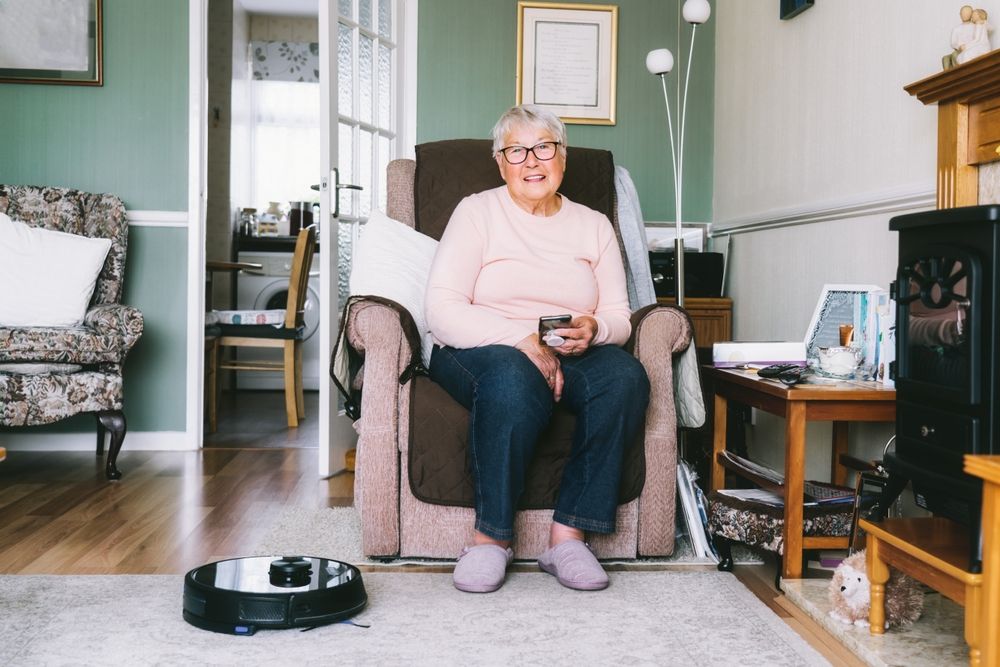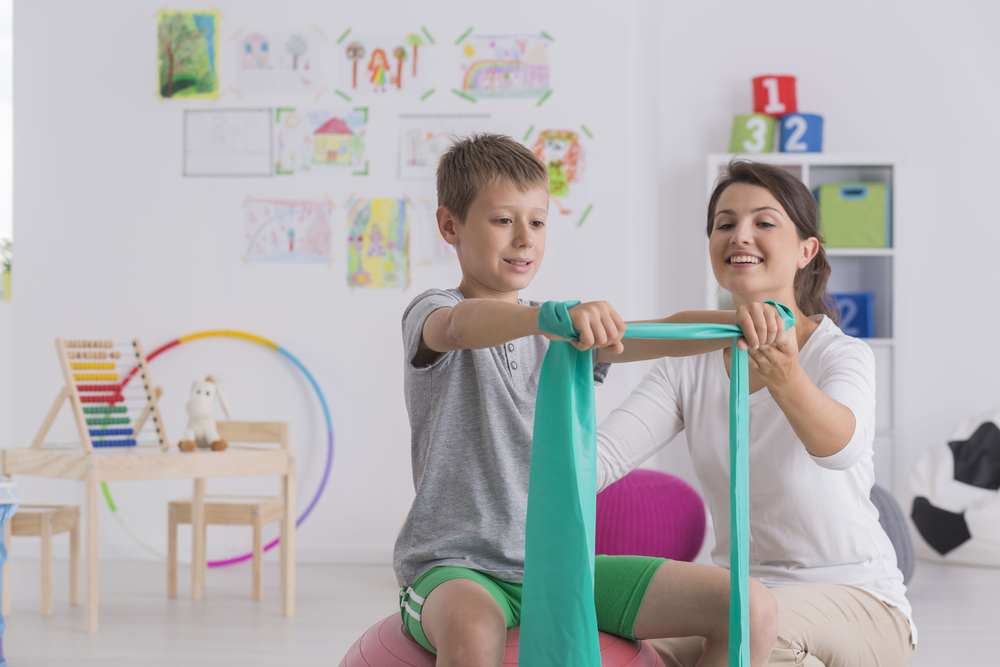Make an Appointment
Assistive Technology (AT) is a powerful tool that can greatly improve the quality of life for individuals living with disabilities, chronic conditions, or age-related limitations.
Recognizing the impact that AT can have on an individual's life is crucial for providing independence, comfort, and safety.
The Australian Rehabilitation and Assistive Technology Association (ARATA) states that AT is critical to the health and well-being of one in ten Australians, and national expenditure on AT exceeds $4.4 billion. Access to quality AT can enhance an individual's political, social, and economic participation and inclusion in society.
From a health outcome perspective, AT is effective in increasing autonomy, independence, health-related quality of life, and productivity of individuals and their support circles. It can help people to continue living in their own homes and communities, and reduce the need for costly institutional care.
Wholistic and consumer-centered AT provision, provided by appropriately skilled practitioners, is a cost-effective strategy to achieve life outcomes. Advances in technology are transforming the lives of people of all ages around the globe, enabling greater participation in a broad range of activities.
At Physio Inq, our Senior Occupational Therapist and Complex AT Clinical Support Supervisor, Ms. Jane Lockwood, and her team strive to provide recommendations for Assistive Technology to our clients. We understand that equipment can be stigmatized as a sign of not being independent anymore. However, Jane and the support of her OT team want to challenge this mindset and show that equipment, home modifications, or different strategies can actually help keep individuals engaged in their daily activities, facilitate social connectedness, and increase access to the local community.
It is important to note that timely identification, prescription, and delivery of Assistive Technology is essential for achieving the best outcomes. If you or a loved one is in need of assistance, it is important to seek out an Occupational Therapist with experience prescribing complex AT. They can help to evaluate the individual's needs, recommend appropriate equipment and strategies, and provide training and support for its use.

There are many examples of assistive technology that can be used in occupational therapy to help individuals with disabilities develop the skills they need to lead independent lives. Some examples include:
1. Adaptive equipment: This can include devices such as modified utensils, adapted clothing, and specialized computer input devices, which can help individuals with physical disabilities perform activities of daily living.
2. Communication devices: This can include devices such as augmentative and alternative communication (AAC) devices, which can help individuals with communication difficulties, such as those with autism or aphasia, express themselves more effectively.
3. Memory aids: This can include devices such as electronic organizers, which can help individuals with cognitive disabilities, such as dementia, keep track of appointments and reminders.
4. Computer software: This can include software programs that can help individuals with vision impairments, such as screen readers and magnifiers, which can make it easier to read and navigate on the computer.
5. Virtual reality: This can include virtual reality systems which can be used in rehabilitation for individuals with physical and cognitive limitations to practice different tasks in a safe and controlled environment
6. Robotics : This can include devices such as exoskeletons and robotic prostheses which can help individuals with mobility impairments to walk and move around more easily.
7. Mobile applications : There are many mobile apps that can help individuals with disabilities to improve their memory, communication, organization, and time management skills.
8. Smart home devices : This can include devices such as smart speakers, thermostats, and security systems, which can help individuals with disabilities to control their environment and manage their daily activities.
These are just a few examples of the many different types of assistive technology that can be used in occupational therapy to help individuals with disabilities develop the skills they need to lead independent lives.
An occupational therapy assistive technology (AT) assessment is a process that helps individuals with disabilities determine which assistive technology devices and strategies will best meet their needs. The assessment process typically involves the following steps:
1. Identification of the individual's goals and needs: The occupational therapist will work with the individual to identify their specific goals and needs, such as the types of activities they want to be able to perform, any barriers they are currently facing, and any other relevant information.
2. Evaluation of the individual's abilities and limitations: The occupational therapist will evaluate the individual's abilities and limitations, such as their fine motor skills, cognitive skills, and vision or hearing abilities. This information will be used to determine which types of AT may be most appropriate.
3. Identification of AT options: The occupational therapist will identify a range of AT options that may be suitable for the individual, such as adaptive equipment, computer software, or communication devices.
4. AT trial and demonstration: The occupational therapist will provide the individual with the opportunity to try out different AT options and demonstrate how they can be used to help the individual achieve their goals.
5. Recommendations and follow-up: Based on the results of the assessment, the occupational therapist will provide recommendations for specific AT devices or strategies. Follow-up visits may be scheduled to ensure that the individual is making progress and that the AT devices are meeting their needs.
6. Training and support: The occupational therapist will provide training and support to the individual and their caregivers to ensure that they can properly use and maintain the AT devices.
It's important to note that this process is not a one-time event, it should be a continuous process of evaluation and adaptation, as the individual's needs and abilities may change over time.
It's also important to note that the assessment process should be client-centered and involve the person with disability in every step, it should be also done in a collaborative effort with other professionals, such as speech therapists, physical therapists, and rehabilitation engineers.
If you are currently working with a Support Coordinator or Case Manager, they should be able to provide you with Occupational Therapists referral options. However, if you are looking for a highly experienced and qualified team, we strongly encourage you to contact Physio Inq. Our team of Occupational Therapists have the knowledge and expertise to provide comprehensive assessments and recommendations for Assistive Technology that can greatly improve the quality of life for our clients right throughout Australia. Find your Local Physio Inq Occupational Therapist HERE.

The evolution of Assistive Technology (AT)
Assistive Technology (AT) is a rapidly evolving field, with new technologies and interventions being developed all the time. Occupational Therapists play a key role in identifying, prescribing, and delivering AT that can improve the lives of individuals with disabilities. Keeping up to date with the latest research in the field is essential for providing the best possible care to clients.
One area of current research in AT is the development of smart home technologies. These technologies can be used to monitor and control various aspects of the home environment, such as lighting, temperature, and appliances. This can improve safety, increase independence, and reduce the need for assistance with daily activities. For example, a smart door lock can be programmed to automatically lock at a certain time, ensuring that the client is safe and secure in their home. Smart home technologies can also be used to monitor an individual's movements and activities within the home, providing caregivers with valuable information
Virtual reality (VR) and augmented reality (AR) are emerging technologies that have the potential to revolutionize the field of assistive technology (AT) and occupational therapy.
VR and AR can be used to simulate real-world environments, allowing individuals with disabilities to practice and improve their skills in a safe and controlled environment.
One of the most promising applications of VR in occupational therapy is for rehabilitation. VR can be used to create immersive simulations of real-world environments, such as a city street or a grocery store, allowing individuals with mobility impairments to practice navigating these environments. Additionally, VR can be used to simulate activities of daily living (ADLs), such as cooking or getting dressed, allowing individuals to practice these skills in a safe and controlled environment.
VR can also be used to provide virtual social interactions, which can be beneficial for individuals with communication or socialization difficulties. For example, VR can be used to create virtual social situations, such as a party or a job interview, allowing individuals to practice their social skills and build confidence.
AR is another technology that has the potential to be used in occupational therapy. AR involves overlaying digital information on the real world, usually via a smartphone or tablet. For example, AR can be used to provide individuals with visual or hearing impairments with real-time information about their surroundings, such as the location of a nearby bus stop or the name of a store. AR can also be used to provide guidance and instruction for performing ADLs, such as cooking or cleaning, by overlaying digital instructions on the real-world environment.
Additionally, AR can be used to provide interactive and engaging therapy sessions, for example for children with developmental disorders. For example, AR can be used to create interactive games that help children practice fine motor skills and improve their coordination.
In summary, virtual reality and augmented reality technologies have a promising future in the field of assistive technology and occupational therapy. These technologies can be used to create immersive simulations of real-world environments, allowing individuals with disabilities to practice and improve their skills in a safe and controlled environment. The use of VR and AR in occupational therapy can help individuals improve their independence, autonomy, and quality of life.
Are you or a loved one living with a disability, chronic condition, or age-related limitation?
At Physio Inq, we understand the importance of assistive technology (AT) in improving the quality of life for individuals. As a NDIS & aged care provider we offer In-Home & Online Occupational Therapy services across Australia. Our team of experienced occupational therapists can help you access the AT you need to live a more independent and fulfilling life.
Don't let limitations hold you back any longer. Contact us today to schedule your AT assessment and discover the powerful impact that AT can have on your life. With our team of occupational therapists, you can have access to the right equipment, home modifications, or different strategies to keep you engaged in your daily activities, facilitate social connectedness, and increase access to the local community.
Don't wait, take control of your life today with Physio Inq's occupational therapy services.
Contact us now to schedule your AT assessment and start living your best life.
Date Published: Thursday, January 19, 2023
Locate a Occupational Therapy
Service Near me
Get the experience & convinence you deserve to support your or a loved one's allied health needs.
Our Occupational Therapy team are currently serving & taking appointments in the following states and regions in Australia:
Need to get into direct contact with ur Client Services team? We're all ears. Call our team directly on 1300 731 733









